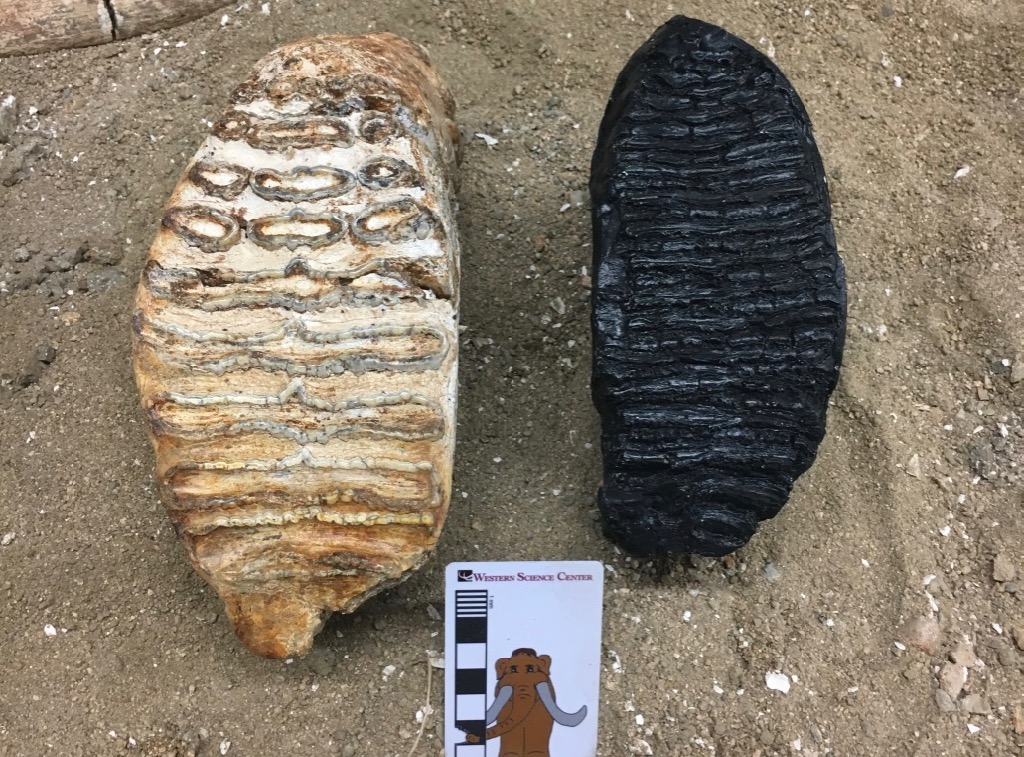 Tomorrow is the Western Science Center's annual fundraiser, Science Under the Stars. That has our entire staff, including me, wrapped up in preparations for 500 guests and a massive benefit auction, so Fossil Friday will necessarily be brief.Above on the left is a partial molar from a Columbian mammoth, Mammuthus columbi, from Pleistocene deposits near Murrieta in Riverside County. As massive as the tooth is, it's incomplete, with the anterior part of the tooth having already worn away. Mammoth teeth (in fact, all the elephants) have enamel arranged in transverse plates that wear to enamel loops on the occlusal surface.The tooth on the right is a cast of a wooly mammoth (M. primigenius) from Alaska. While it's a little difficult to see on the black tooth, the enamel plates on the wooly mammoth are thinner and more numerous than on the Columbian mammoth. This general rule is often used to distinguish between the two species, but as so often seems to be the case, proboscideans are not good at following rules! There is considerable overlap in this character ("lamellar frequency") between Columbian and wooly mammoths. Moreover, it appears that the two species were regularly interbreeding where their ranges overlapped (the apparent hybrids were originally given a different species name, M. jeffersonii). And recent genetic evidence calls into question whether Columbian and wooly mammoths were in fact just different morphs of a single, highly variable species.
Tomorrow is the Western Science Center's annual fundraiser, Science Under the Stars. That has our entire staff, including me, wrapped up in preparations for 500 guests and a massive benefit auction, so Fossil Friday will necessarily be brief.Above on the left is a partial molar from a Columbian mammoth, Mammuthus columbi, from Pleistocene deposits near Murrieta in Riverside County. As massive as the tooth is, it's incomplete, with the anterior part of the tooth having already worn away. Mammoth teeth (in fact, all the elephants) have enamel arranged in transverse plates that wear to enamel loops on the occlusal surface.The tooth on the right is a cast of a wooly mammoth (M. primigenius) from Alaska. While it's a little difficult to see on the black tooth, the enamel plates on the wooly mammoth are thinner and more numerous than on the Columbian mammoth. This general rule is often used to distinguish between the two species, but as so often seems to be the case, proboscideans are not good at following rules! There is considerable overlap in this character ("lamellar frequency") between Columbian and wooly mammoths. Moreover, it appears that the two species were regularly interbreeding where their ranges overlapped (the apparent hybrids were originally given a different species name, M. jeffersonii). And recent genetic evidence calls into question whether Columbian and wooly mammoths were in fact just different morphs of a single, highly variable species.
